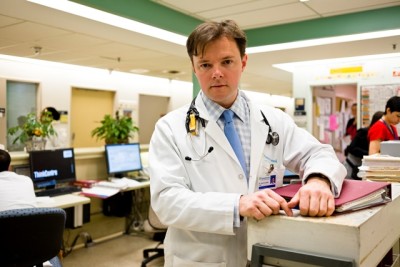Pain, unfortunately, is all too common. We have a natural aversion to it, and many patients have the expectation that it should be treated with medication. This is understandable.
But when it comes to treating pain with medication, we have a problem: our options are limited, and the drugs we have often don’t work very well. We typically start with painkillers such acetaminophen or anti-inflammatory drugs (ASA, ibuprofen, naproxen and a dozen others). But for some people they aren’t safe or they just don’t work. Increasingly, the next step is a trial of #opioids – drugs like codeine, morphine, oxycodone, hydromorphone and others. These drugs are derived, directly or indirectly, from the opium poppy, and they are now taken by millions of North Americans daily. It is difficult to argue that this is a good thing.
In the past, #opioid painkillers were reserved for severe pain (for example, pain resulting from a fracture), cancer pain, or pain at the end-of-life. Opioids were rarely prescribed for chronic pain because doctors were fearful of the risks, including the development of addiction. In the mid-1990s, the landscape began to change, and opioids were prescribed with increasing frequency to millions with chronic pain. This change reflected a “new approach” (as it was cast at the time) of thinking about chronic pain. Eager to make their patients feel better, physicians accepted this new approach uncritically, oblivious to the paucity of evidence supporting the practice. In fact even 20 years later, no studies have shown opioid therapy to be a safe and effective long-term treatment for pain. Nevertheless, countless patients receive prescription opioids, often at inordinately high dosages. Many of them are being actively harmed by treatment, and it is estimated that between 10,000 to 20,000 Canadians have died from opioids since 1995.
MORE: WHERE WILL THE NEXT GENERATION OF CEOS COME FROM?
Patients who take opioids rapidly develop tolerance to the drugs. In other words, pain relief lessens over time, often leading patient or prescriber to increase the dose. Even regular users who follow their doctor’s advice to the letter develop physical dependence, which can make it difficult to lower the dose or stop therapy without developing unpleasant side effects. Many patients come to believe they need opioids to function normally, when in fact the drugs are needed to avoid experiencing opioid withdrawal. To make matters worse, as doses escalate, opioids can actually make pain worse. Few physicians and even fewer patients appreciate that opioid-induced hyperalgesia can actively undermine efforts to relieve pain, and increase the dose further in a desperate but futile search for relief.

Even leading pain experts who once espoused the use of opioids for chronic pain now acknowledge that the role of these drugs needs to change. At the core of the discussion is a simple, unarguable principle of medical care: the benefits of a therapy should exceed its risks, ideally by a large margin. With opioids, this is clearly not happening.
What changes should occur? An important first step is for doctors, pharmacists and nurses to help manage expectations about what pain medicines can and cannot do. Physicians and patients alike need better education about the many risks of long term opioid use. There should be a frank discussion between physicians and patients at the outset of therapy regarding the goals of treatment, with a clear “exit strategy” if those objectives are not met.
MORE: MOVING TO THE FOREFRONT OF HEALTH CARE TECHNOLOGY
Prescribers must resist the urge to increase the dose of opioids in response to ongoing pain. Continued pain is expected, in part because opioids aren’t as good at treating chronic pain as we’ve been led to believe, and in part because of the development of tolerance as noted above. In early 2016, it is anticipated that the United States Centres for Disease Control and Prevention will publish new guidelines for the use of opioids in chronic pain, recommending a threshold dose of 90 milligrams of morphine (or equivalent) per day. If heeded, this recommendation alone could save hundreds or perhaps thousands of lives every year.
We also need to emphasize the importance of non-drug therapies in certain pain states. For example, exercise can significantly benefit patients with fibromyalgia, while weight loss can lessen pain from osteoarthritis. While these interventions are more difficult than simply taking a pill, non-drug interventions can sometimes go a long way toward helping patients improve quality of life while limiting the use of opioids.
We practice in a culture that expects (and to a certain extent facilitates) the prescribing of medication for many of life’s challenges, including pain. Sometimes opioids are needed, but for many patients with chronic pain they afford more harm than their benefits justify. We have to rethink how we treat pain. Until we have better drug therapies, we must respect a fundamental tenet of medical practice: never make the treatment worse than the disease.


